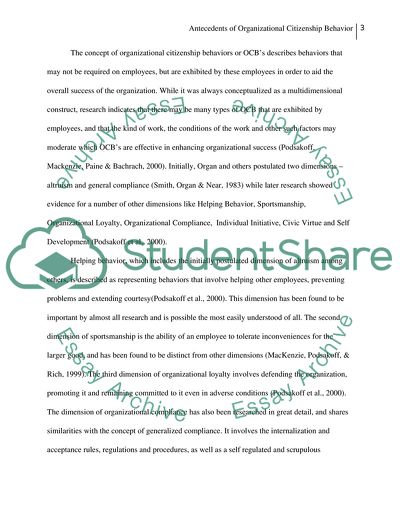Cite this document
(Antecedents of Organizational Citizenship Behaviors Literature review Example | Topics and Well Written Essays - 2250 words, n.d.)
Antecedents of Organizational Citizenship Behaviors Literature review Example | Topics and Well Written Essays - 2250 words. https://studentshare.org/psychology/1781261-literature-review-essay
Antecedents of Organizational Citizenship Behaviors Literature review Example | Topics and Well Written Essays - 2250 words. https://studentshare.org/psychology/1781261-literature-review-essay
(Antecedents of Organizational Citizenship Behaviors Literature Review Example | Topics and Well Written Essays - 2250 Words)
Antecedents of Organizational Citizenship Behaviors Literature Review Example | Topics and Well Written Essays - 2250 Words. https://studentshare.org/psychology/1781261-literature-review-essay.
Antecedents of Organizational Citizenship Behaviors Literature Review Example | Topics and Well Written Essays - 2250 Words. https://studentshare.org/psychology/1781261-literature-review-essay.
“Antecedents of Organizational Citizenship Behaviors Literature Review Example | Topics and Well Written Essays - 2250 Words”. https://studentshare.org/psychology/1781261-literature-review-essay.


